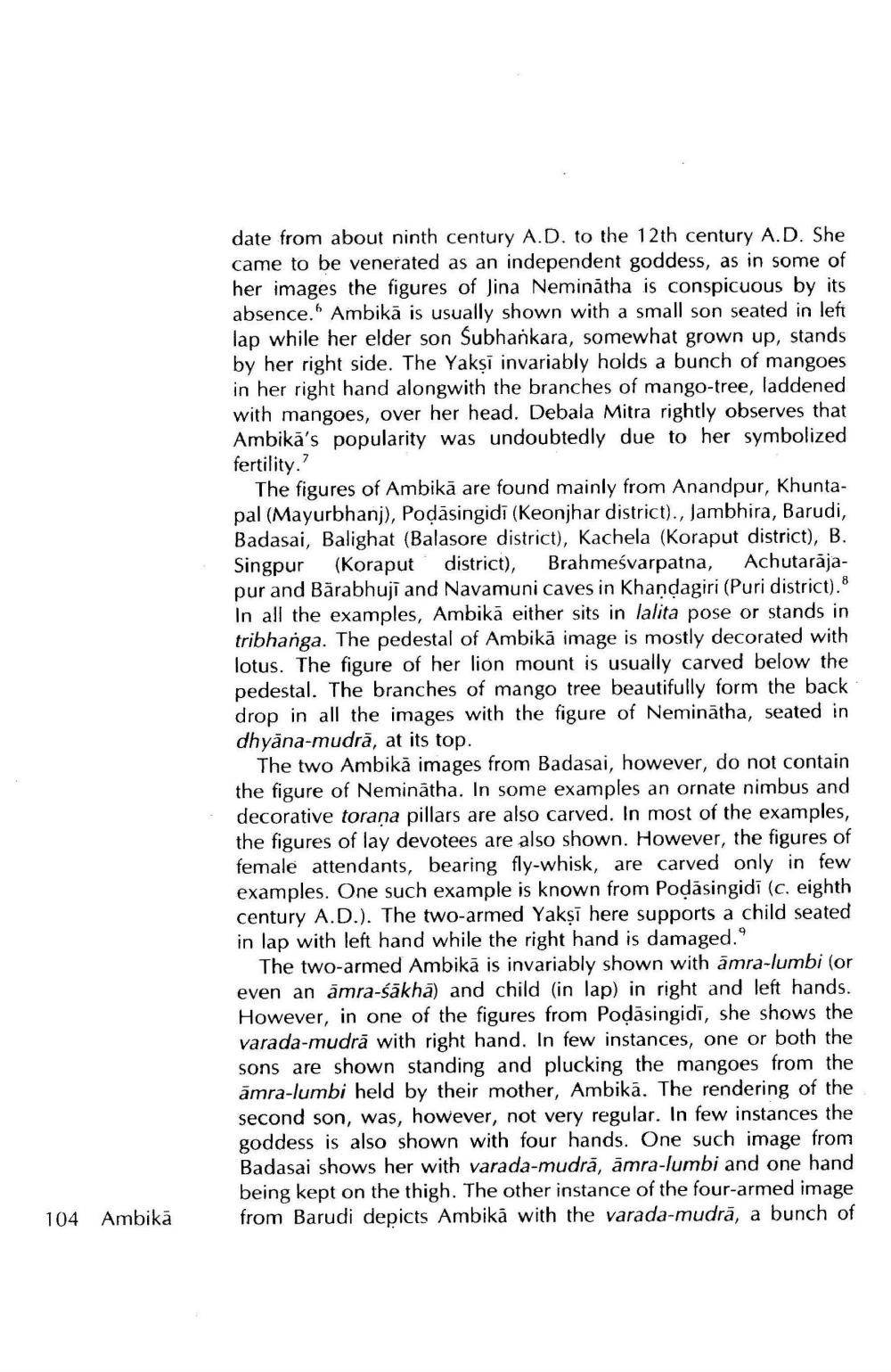________________
date from about ninth century A.D. to the 12th century A.D. She came to be venerated as an independent goddess, as in some of her images the figures of Jina Neminātha is conspicuous by its absence. Ambikā is usually shown with a small son seated in left lap while her elder son Subhankara, somewhat grown up, stands by her right side. The Yakşi invariably holds a bunch of mangoes in her right hand alongwith the branches of mango-tree, laddened with mangoes, over her head. Debala Mitra rightly observes that Ambika's popularity was undoubtedly due to her symbolized fertility?
The figures of Ambikā are found mainly from Anandpur, Khuntapal (Mayurbhanj), Podāsingidi (Keonjhar district)., Jambhira, Barudi Badasai, Balighat (Balasore district), Kachela (Koraput district), B. Singpur (Koraput district), Brahmeśvarpatna, Achutarājapur and Bārabhuji and Navamuni caves in Khandagiri (Puri district).8 In all the examples, Ambikā either sits in lalita pose or stands in tribhanga. The pedestal of Ambikā image is mostly decorated with lotus. The figure of her lion mount is usually carved below the pedestal. The branches of mango tree beautifully form the back drop in all the images with the figure of Neminātha, seated in dhyāna-mudrā, at its top.
The two Ambikā images from Badasai, however, do not contain the figure of Neminātha. In some examples an ornate nimbus and decorative torana pillars are also carved. In most of the examples, the figures of lay devotees are also shown. However, the figures of female attendants, bearing fly-whisk, are carved only in few examples. One such example is known from Podāsingidi (c. eighth century A.D.). The two-armed Yaksi here supports a child seated in lap with left hand while the right hand is damaged.
The two-armed Ambikā is invariably shown with amra-lumbi (or even an amra-śākhā) and child (in lap) in right and left hands. However, in one of the figures from Podāsingidi, she shows the varada-mudrā with right hand. In few instances, one or both the sons are shown standing and plucking the mangoes from the āmra-lumbi held by their mother, Ambikā. The rendering of the second son, was, however, not very regular. In few instances the goddess is also shown with four hands. One such image from Badasai shows her with varada-mudrā, āmra-lumbi and one hand being kept on the thigh. The other instance of the four-armed image from Barudi depicts Ambikā with the varada-mudrā, a bunch of
104 Ambikā




